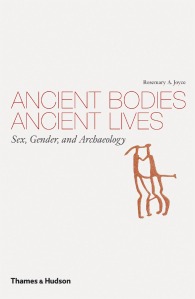You have to think that Zahi Hawass will not want to be remembered for this quote, out of everything he has to say about Egyptian antiquities.
But when the intersection between archaeology and sex becomes literally the intersection of archaeology and… sex, I am willing to bet that this is one thing Hawass says that will follow him wherever he goes.
I have to admit that my attention was drawn to this story, like millions of other people, by The Colbert Report. Considering the source, I was dubious.
But the New York Daily News offered me the confirming headline: Rumors swirling that King Tut’s penis was stolen because of its alleged small size.
There. I said it. Or at least, wrote it.
Citing the British weekly New Scientist, the Daily News writes that the mummy was “intact” when first unwrapped in 1922; the penis was “said to be missing” in 1968, but apparently visible, covered in sand, in a CT scan that New Scientist reports was carried out in 2006.
The succinct conclusion of the Daily News article says it all:
Now some scientists think the penis was taken at some point after the body was embalmed, raising the possibility that it might have been a conspiracy to spare Tut, in the afterlife, the “locker room” variety of embarrassment.
As the Atlantic Monthly’s Atlantic Wire says, “That part of the job didn’t make it into Indiana Jones”.
So is there any way to use this as a teachable moment? Or are archaeologists– and especially Egyptologists– now just doomed to wince every time Tutankhamun is mentioned, with no benefit?
Jo Marchant, the original reporter for the New Scientist, was actually pursuing different arguments about how Tutankhamun died, including one that his family
may have suffered from a hormonal disorder that is similar to Antley-Bixler syndrome. In this singularly interesting syndrome, a single genetic mutation causes elongated skulls, and over-production of oestrogen. Male sufferers can have distinctive physical features, including breasts and under-developed genitalia.
Marchant reports that the medical doctors who made this suggestion relied on visual depictions of the pharaonic family, especially Tutankhamun’s father, Akhenaten, “as having feminine bodies, with hips and breasts, and particularly long heads”.
So one thing I would definitely ask my students to examine carefully is the assumption, not unique to people dealing with Akhenaten and his ilk, that human images are necessarily realistic representations of what people looked like in the past. Akhenaten is famous for his call to break the pattern of idealization of canonical Egyptian art, but that doesn’t mean sculptured images are the same as the bodies they commemorate.
Akhenaten was interested in combating the idealization of the pharaonic body as untouched by the passage of time, as an eternal youth. Lucas Livingston of the Chicago Art Institute suggests that Akhenaten employed a mixture of feminine and masculine body imagery like that of the god Hapi, god of the Nile flood, an image of divinity as both male and female. Dominic Montserrat notes that Hapi was one of the deities whose worship Akhenaten continued. So his rounded belly and prominent breasts might be as symbolic as the upright posture and idealized youthful body they replaced. There is certainly no reason to assume that Akhenaten’s artists were presenting a truthful depiction sufficient for medical diagnosis, even if post-Renaissance culture has convinced us to see realism as the goal of art.
But even more interesting to me, and what I take as the primary lesson to be learned from this unfortunate episode of checking out Tutankamun’s equipment, is what the debate about whether or not he was “well-endowed” tells us about contemporary views of sexuality, and how much those views impede our understanding of the Egyptian past.
To some extent, the phallicism of the modern world was echoed, and indeed, presaged in ancient Egypt, as Lynn Meskell argues in our co-authored book, Embodied Lives: Figuring Ancient Maya and Egyptian Experience. But the masculinity of the pharaoh was inherent in his status, and in his recapitulation of a mythology in which the dead body of the deity Osiris had to be reassembled by Isis, who could not recover his penis and had to replace it magically. In at least some accounts, this was followed by Isis and Osiris having sex.
Akhenaten’s masculinity was in no doubt, manifested not in an isolated body part, but in the material signs of his potency, including the numerous children he fathered. Tutankhamun’s potency was reinforced in his burial by an extraordinary layering of objects worn on the body, repeating his royal names and linking him to symbols of potency such as the lion.
There was no equivalent for pharaoh of a locker room where, stripped of clothing and other signs of social standing, men’s relative standing depended on their raw flesh.


Posted on July 1, 2010
0